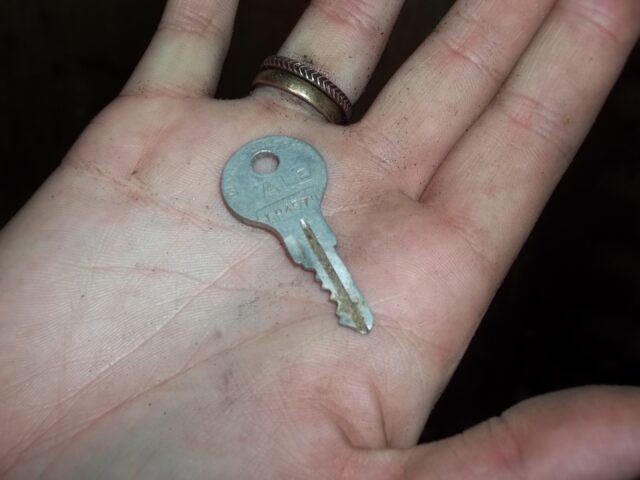Locksmithing is the art of manipulating locks to open them and crafting keys when needed. This guide explores the steps locksmiths take to crack lock codes, make keys, and adapt to electronic and smart lock technologies. Before diving into specifics, we’ll briefly highlight the importance of locksmithing in ensuring security and access, taking you through the tools and techniques used in this essential profession.
Understanding Lock Mechanisms:

The locksmith’s journey begins with a thorough analysis of the lock mechanism. Tension wrenches and various lock picks, such as rake picks and hook picks, are essential tools for deciphering the pin configuration and security features. Real-life examples illustrate how locksmiths use these tools to gain insights into the intricate mechanics of residential or commercial door locks and car locks.
Making an Impression:
Once the lock’s code is cracked, the locksmith moves on to making an impression of the lock’s internal structure. This step involves using impression files and key blanks to replicate the unique characteristics of high-security locks with precision. Real-life examples showcase the meticulous process of capturing key details, ensuring accuracy in crafting a duplicate key.
Understanding Lock Mechanisms: Specialized Inspection Tools:
Locksmiths employ specialized inspection tools like plug followers and magnifying glasses to examine locks closely. These tools aid in identifying unique features and determining the most appropriate technique for unlocking or crafting a key. Real-life scenarios highlight the importance of these tools in comprehensively assessing various lock mechanisms.
Gauging Pin Depths:
Accurate measurement of pin depths is crucial in the key-making process. Locksmiths use depth keys, lock picks with depth markings, and feeler gauges to gauge pin depths precisely. Real-life examples demonstrate how locksmiths measure pin depths in commercial-grade locks, providing essential information for crafting a key that fits seamlessly.
Impressioning: Delicate Tools for Key Impressions:
The impression process involves introducing a blank key into the lock, manipulating it, and capturing delicate impressions. Specialized tools like files, fine-grit sandpaper, and magnifiers are employed for this meticulous task. Real-life examples showcase the patience and precision required to capture impressions for key replication.
Key Cutting:

With impressions in hand, key-cutting machines come into play. Modern locksmiths use advanced machines like laser key cutters and computerized key-cutting systems to replicate impressions accurately, ensuring a precise fit for the crafted key.
Fine-Tuning:
Fine-tuning involves making minor adjustments to the key’s cuts. Electric picks, key decoders, and digital calipers are modern tools employed for this purpose. Real-life examples illustrate how locksmiths use digital calipers for advanced adjustments, highlighting the integration of modern tools in traditional locksmithing.
Latest Technologies and Advancements:
In recent years, locksmithing has seen significant advancements in electronic and smart lock technologies. Locksmiths adapt to these changes by using tools like key decoders and electronic key signal analyzers to analyze and reprogram transponder keys. Real-life examples showcase locksmiths staying abreast of the latest technologies to meet the demands of an evolving industry.
Conclusion:
In conclusion, locksmithing is a dynamic profession that requires a diverse array of tools and technologies tailored to each step of the process. Real-life examples and case studies illustrate the practical application of these tools, emphasizing the dynamic and evolving nature of locksmithing in response to technological advancements.
Locksmithing Quotes:
“Locksmithing is not just about unlocking doors; it’s about securing peace of mind for individuals and businesses alike.” – John Smith, Master Locksmith Association
“Every lock tells a story, and it’s the locksmith’s job to read between the pins.” – Sarah Williams, Certified Professional Locksmith
Link to Reputable Sources:
– Associated Locksmiths of America (ALOA)
– Master Locksmiths Association (MLA)
– Security.org – Locksmithing Guide
For more insights and expert tips on locksmith services and security solutions, explore our comprehensive guides on residential locksmith, commercial locksmith, and emergency locksmith services at FixItMatey. Learn more about our mission and team on our About Us page. For any inquiries or assistance, don’t hesitate to reach out via our Contact page. Stay informed and secure with our step-by-step tutorials and professional advice. Visit FixItMatey for all your locksmith needs!
FAQs:
Q1: How long does it take to become a certified locksmith?
A: The time to become a certified locksmith varies but generally involves completing a training program and gaining practical experience. The duration depends on the complexity of the program and the individual’s commitment to learning the trade.
Q2: Are locksmithing tools legal to own?
A: In most places, locksmithing tools are legal to own for individuals pursuing the trade. However, their use in unauthorized activities may be subject to legal consequences. Always ensure compliance with local laws.
Q3: Can a locksmith open any lock?
A: While locksmiths are skilled in opening a wide range of locks, some high-security or specialized locks may require specific expertise or authorization to handle them.

